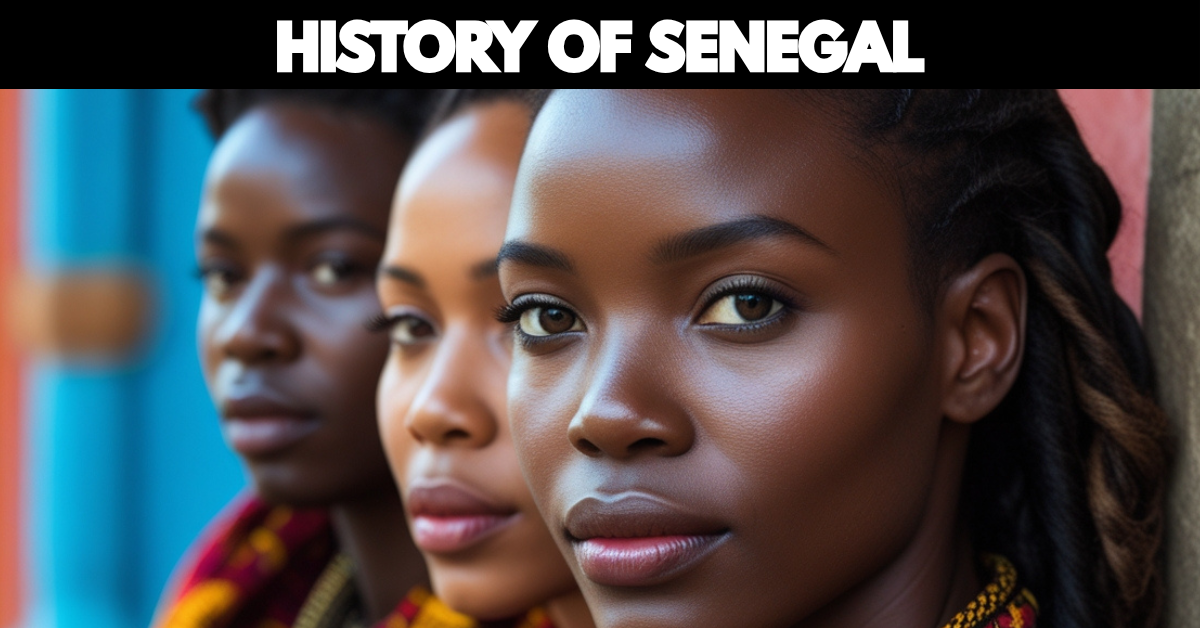Senegal has a rich and ancient history. Early human settlements left behind Paleolithic and Neolithic tools, while the central region contains stone circles dating from the 3rd century BCE to the 16th century CE—now a UNESCO World Heritage site. By the 11th century, the Fulani and Tukulor peoples had settled in the lower Senegal River valley. The name “Senegal” likely derives from the Zenaga Berbers of Mauritania and northern Senegal. Around 1040, the Zenaga established a fortified Muslim religious site, or ribāṭ, which later served as a base for the Almoravid movement. These warriors influenced regional Islamization and contributed to the decline of the Ghana Empire.
Between 1150 and 1350, Njajan Njay founded the Jolof kingdom, which later splintered into five Wolof states. Islam spread unevenly until gaining momentum in the late 17th century. In 1776, a theocratic confederacy emerged in Fouta, led by Tukulor Muslims.
European Contact and Colonial Rule
Portuguese traders arrived in 1444 and set up trading posts along the coast. By the 17th century, the Dutch and then the French took control. In 1659, the French established Saint-Louis, and in 1677 they seized Gorée Island. Both became key centers for the French slave trade and commerce in gum arabic and gold.
After brief British occupation, France regained control in 1816. Efforts to grow cotton failed, and gum trade took priority. In 1848, slavery was abolished. Under Governor Faidherbe (appointed in 1854), France expanded its influence. Al-Ḥājj ʿUmar Tal, a prominent Tukulor leader, conquered parts of Mali but failed to resist French encroachment. After his death in 1864, France consolidated power, turning Senegal into a peanut-exporting colony.
Railroads built in the 1880s linked Saint-Louis, Dakar, and the interior. In 1895, French West Africa was established, with its capital moving from Saint-Louis to Dakar in 1902. Despite colonial control, inhabitants of the Four Communes (Dakar, Saint-Louis, Rufisque, and Gorée) had French citizenship. In 1914, Blaise Diagne became the first Black African elected to the French National Assembly.
Senegalese soldiers fought in both World Wars. Citizenship rights were stripped under the Vichy regime but restored in 1947. Léopold Sédar Senghor and Lamine Guèye, elected in 1946, pushed to expand rights. Senghor emerged as a cultural and political leader, advocating for a fusion of African and French values.
Independence and the Senghor Era
Senegal voted in favor of joining the French Community in 1958 but gained full independence in 1960, briefly forming the Mali Federation. Senghor became the first president, maintaining ties with France and cooperating with Islamic leaders. His presidency brought stability, but economic challenges and political restrictions led to growing dissent. In 1976, he allowed opposition parties, and in 1981, he peacefully handed power to Prime Minister Abdou Diouf.
The Diouf Years (1981–2000)
Diouf continued Senghor’s policies and maintained strong Muslim ties. His Socialist Party (PS) dominated politics, but elections in the 1980s and ’90s were marked by irregularities and growing opposition. Economic difficulties—fueled by drought, falling exports, and inflation—sparked unrest. The 1994 devaluation of the CFA franc triggered major protests. Despite this, PS remained in power, with Diouf reelected in 1993 and PS winning again in 1998.
Democratic Transition: Abdoulaye Wade
In 2000, Abdoulaye Wade, leader of the opposition Democratic Party (PDS), won the presidency, ending PS dominance and marking Senegal’s first peaceful transfer of power. Wade was reelected in 2007, but his second term was marred by criticism over infrastructure failures, rising costs, and the controversial $27 million African Renaissance Monument unveiled in 2010.
In 2011, Wade’s proposal to lower the threshold for avoiding a runoff and his bid for a third term—arguably against the spirit of the constitution—led to mass protests. Though the Constitutional Council allowed his candidacy, public backlash was strong. In the 2012 runoff, former prime minister Macky Sall defeated Wade and became president.
The Macky Sall Presidency
Sall took office in 2012 and later pushed for constitutional reforms, including term limits and reducing the presidential term to five years. His “Emerging Senegal” initiative led to infrastructure expansion, including the new city of Diamniadio and a new international airport.
However, his administration faced criticism for suppressing dissent. High-profile opposition leaders, including Dakar’s mayor Khalifa Sall and Karim Wade, were jailed on corruption charges and barred from the 2019 election, which Sall won with 58% of the vote. In 2022, Sall’s coalition narrowly retained a legislative majority after forming a last-minute alliance.
By 2023, tension mounted over whether Sall would run for a third term. Legal cases against opposition leader Ousmane Sonko, widely viewed as politically motivated, triggered mass protests. In July, Sall announced he would not seek reelection, but unrest had already shaken Senegal’s image as a democratic leader in West Africa.
2024 Election Crisis and Resolution
In February 2024, just weeks before the scheduled election, Sall postponed the vote, citing disputes over disqualified candidates, including Sonko and Karim Wade. The decision, backed by the legislature, sparked national outrage and international condemnation. The Constitutional Council ruled the postponement unconstitutional and ordered elections to proceed.
Sall complied, appointing a new prime minister and scheduling elections for March 24. An amnesty law was passed, freeing many jailed protesters and opposition figures. Sonko and his ally, Bassirou Diomaye Faye—who ran as a candidate in Sonko’s place—were released in mid-March. Faye won the election, marking another peaceful transition of power and affirming Senegal’s commitment to democracy amid political strain.
